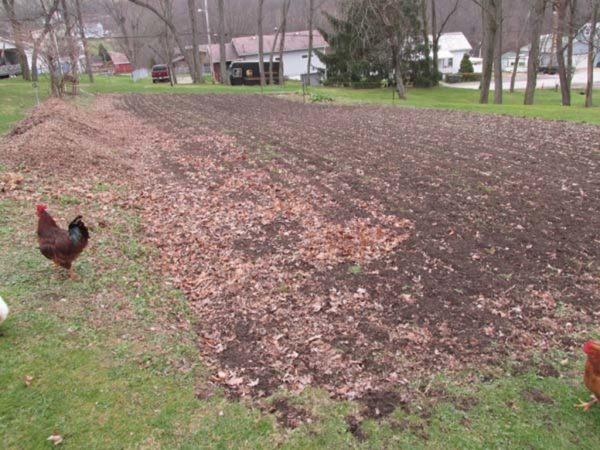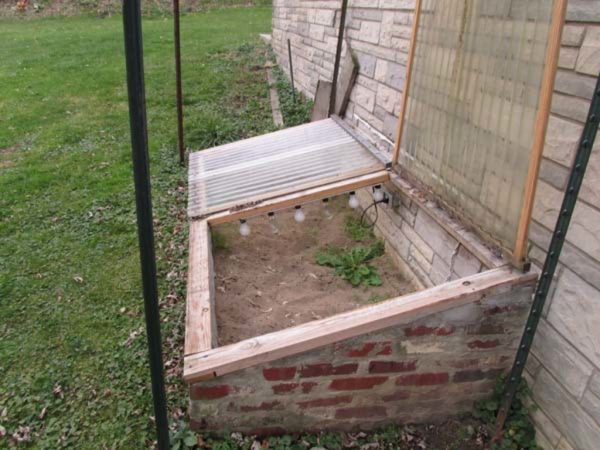Author’s Note: This is the first installment in a planned series of informational articles for Ohio Valley gardeners. We will publish one installment this month and one in January. Then the installments will be more frequent as we enter the growing season. The goal is to follow our home vegetable garden through a one year cycle. My wife, Betty and I both grew up on farms in Ohio with large vegetable gardens. In addition, I have a BS degree in agriculture, so a little soil science may slip in from time to time. She does more of the work in the garden than me. That’s why this is called “Betty’s Garden Diary!” We are not growing a show garden. We plant what we like to eat. We can show some of what we grow. We are probably not the best gardeners in this area, so you will see some weeds. However, we hope that you will find this series to be useful. Please add your comments and feedback and help and make this series a community effort!
Why in the world would we start a series on vegetable gardening in December? The answer is because your vegetable garden is really a year round project. The above photo of our garden was taken December 8, 2015. In the far corner, you will see the remains of our turnip patch surrounded by an electric fence to keep out the deer. (I will publish electric fence instructions in a future installment!) The rest of our garden has been tilled. We have several trees on our lot. Along the left side of our garden is a ridge of the leaves that we collected this fall. We will compost them all summer and put them onto the garden next fall. The leaves on the garden were blown onto it after it was tilled. We don’t pick those up, but we will use a blower to remove them before we till the garden next spring because leaves need to be composted before they are added to the garden. Otherwise, they will make the soil very gummy. We tilled the garden using a small tiller that pulls behind our lawn tractor. Notice that we left the soil somewhat rough with ridges. That rough surface will help to slow down the runoff water when it rains. This garden is on the southern slope of the hill with a 6% slope, so erosion control is a concern. Our garden measures almost exactly 50 feet by 100 feet.
We like to grow our own bedding plants. The photo above shows our cold frame. It is built on the southern facing outside wall of our basement. About twenty years ago, we tore down an old chimney in our house and used some of the bricks to build this cold frame. The top has been replaced several times! If you are planning to grow some bedding plants, now is a good time to build your cold frame. You don’t need to use bricks! There are lots of free cold frame plans online that use wood or even bales of straw. Did you notice the row of light bulbs down the middle of our cold frame? Those are for heat rather than light! We will set our bedding plants out into the cold frame very early in the spring. To keep them from getting too cold at night, we close the lids to the cold frame and plug in the lights. The six light strip came from the local home improvement store. The bottom of the cold frame is filled with about six inches of sand to provide drainage under the pots holding the bedding plants. When the time comes, we will make our own pots using newspaper pages. We will provide the instructions for you so that you can do so also! By the way, I am going to remove that dandelion! Build your cold frame now so that it will be ready to go when you need it in the spring! I recommend making your cold frame at least two feet deep from cover to sand in the back.
Another thing that you can do now is to download the 2016 edition of the WVU Extension Service Garden Calendar. Just visit this web site: http://anr.ext.wvu.edu/garden_calendar
About half way down the page, you will see a link entitled 2016 Garden Calendar Home Printing. When you click that link, the garden calendar will download for you as a PDF. If the weather cooperates, Betty and I will likely plant some of our crops before the recommended dates on the calendar, but we have the advantage of a well-drained garden with southern exposure.
One advantage to growing some of your own bedding plants is that you have the choice of a lot more varieties of vegetables than you will find in the local garden centers. Now is a good time to go online and surf some of the seed catalogs because you are going to want to order some of those seeds next month. Here are the links for three of the most popular seed catalogs: Burpee’s Seeds and Plants, Gurney’s Seeds, Park Seed. We have no commercial interest in any of them, but have ordered seeds from all three of these and a couple more. Just go online and search for seed catalogs! We will be ordering seeds in January. At that time, I will tell you which varieties we are going to grow!
By the way, this is a good time of year to think about taking care of your lawn and garden equipment and tools. Did you know that the ethanol in the gasoline that is in your lawnmower, rototiller, boat motor, snow blower, etc. can separate out during the long term winter storage and attack the plastic parts of the fuel system? A good plan is to drain the fuel from any lawn and garden equipment that you will not be using for the next few months. Empty the gas tank and then run the engine until it runs out of fuel. Another option is to get a good brand of fuel stabilizer and add it to the fuel. Be sure to follow the recommendations of the maker of the stabilizer and be sure to run the engine long enough to replace the old fuel in the carburetor with new fuel containing the stabilizer. If you have noticed that the gas cap on your weedeater or chainsaw has become hard to remove or install, you have seen some of the effects of the ethanol. We use a marine formula fuel stabilizer. It is more expensive, but works great! If you haven’t already done so, be sure to clean the crap off of the underside of your mower deck so that it doesn’t hold moisture there and rust the deck. Run the engine on all of your power equipment at least once per month to maintain lubrication and charge the batteries. This is also a good time to clean and sharpen your garden tools.
Thanks for taking the time to read the first installment of Betty’s Garden Diary. I hope it was worth the electronic paper that it occupied. Please contribute your ideas and suggestions!
Earl and Betty Nicodemus






